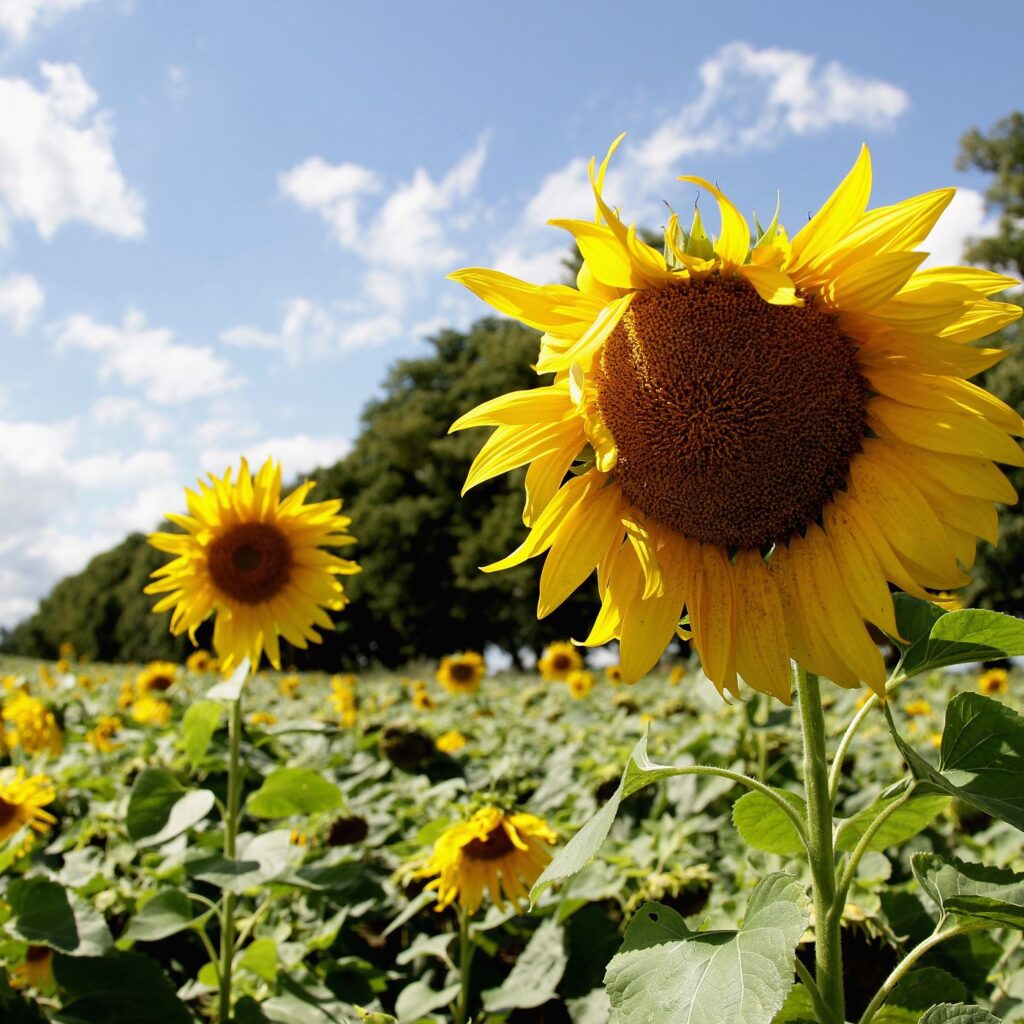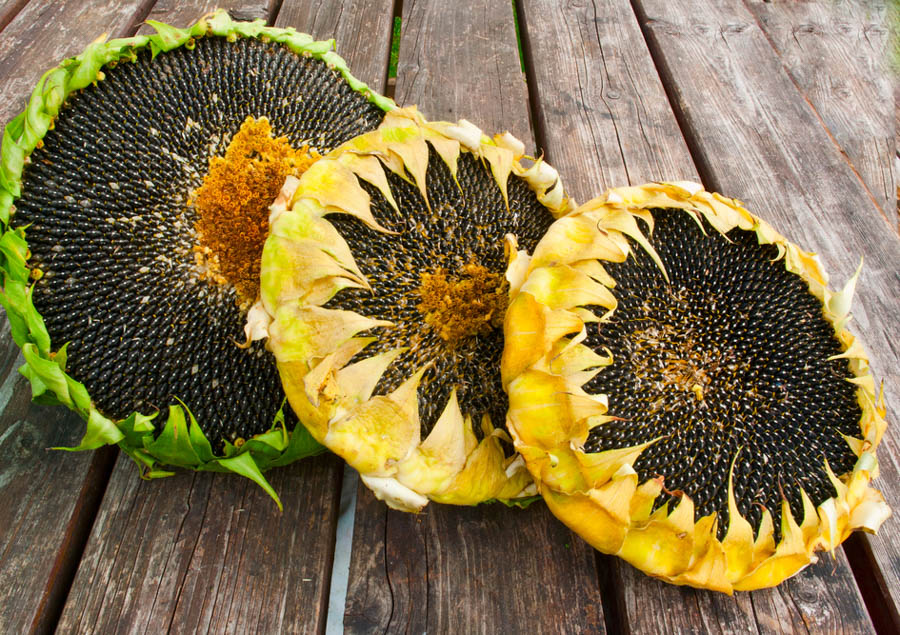Sunflower seeds contain many nutrients and the best seeds come fresh from the flower head. They’re packed with calcium, iron, phosphorus, magnesium, and potassium.
Sunflowers are easy to grow and fun for everyone. It is a family favorite for everyone to enjoy. These are sublime in a field amongst thousands, but also one will do beautifully in a home. These are super lovely examples of diverse and fun ways on how to marvel at their progression.
One would see them bloom from summer into autumn and depending on the variety, they can take from 11 to 18 weeks to flower from seed sowing. Do feel free from sowing them every couple of weeks, in order to have them standing proud for months.
Fun fact: The National Garden Bureau has designated 2021 the Year of the Sunflower!
1. Best time to plant sunflowers
It’s best to sow sunflower seeds directly into the garden or outdoor containers. Sunflowers dislike having their roots disturbed, which is why we recommend direct-sowing instead of transplanting.
After the danger of spring, frost has passed anytime after soils have warmed to at least 50°F (10°C) is the best time to plant the sunflower seeds. In most regions, this will fall between April and mid-July. In the south, this will probably occur in mid-March or early April.
2. Preparing the planting site
The name of this plant says it all! Find a place that is very sunny. These beautiful plants like direct sunlight for about 6 to 8 hours a day. Choose a location with well-draining soil. It shouldn’t pool water after it rains.
They have long tap roots that need to stretch out. When preparing a bed, dig down 2 feet in depth and about 3 feet across.
The soil of the sunflowers needs to be nutrient-rich with organic matter or composted (aged) manure, as these flowers are heavy feeders.
3. Planting the sunflower seeds
First of all, a light application of fertilizer mixed in at planting time will encourage strong root growth to protect them from blowing over in the wind. Sunflowers should be planted 1 to 1-1/2 inches deep and about 6 inches apart after the soil has thoroughly warmed.
These plants need plenty of room, especially for low-growing varieties that will branch out. Make the rows about 30 inches apart (for small varieties, plant closer together). Also, you can plant multiple seeds and thin them to the strongest contenders when the plants are six inches tall.
4. Caring for the sunflower
While the plant is small, water around the root zone, about 3 to 4 inches from the plant. To protect the plant, it may help to put snail or slug bait around the stem. Once the plant is established, water deeply though infrequently to encourage deep rooting. Unless the weather is exceptionally wet or dry, water once a week with several gallons of water.
The taller species and cultivars require support. Try bamboo stakes, they are a good choice for any plant that has a strong, single stem and needs support for a short period of time.
5. Pests and diseases
Sunflowers are relatively insect-free. Birds and squirrels are the most common pests that can show interest in your sunflower. However, a small gray moth can sometimes lay its eggs in the blossoms. You can just pick the worms from the plants and observe.
If any fungal diseases you have spotted early, spray with a general garden fungicide.
6. Cutting the sunflowers for a bouquet
Cut stems early in the morning. Harvesting flowers during the middle of the day may lead to flower wilting. If you wish to make a beautiful indoor bouquet, cut the main stem just before its flower bud has a chance to open to encourage side blooms. Handle the sunflowers gently and change the water every day to keep them fresh.
The flowers should last at least a week in water at room temperature.
7. Harvest the sunflower seeds
First and most important role when harvesting sunflowers is to be able to recognize when the sunflower seeds are close to harvest. You should wait and let the seeds dry completely on the stem. Then, just cut the stem an inch below the heads.
When the seeds are thoroughly dried (after a few weeks), dislodge them by rubbing two heads together, or by rubbing the seeds with your hand or by using a stiff brush. Dislodge them over a big bucket. Allow the seeds to dry overnight on a paper towel!
8. Enjoy and roast sunflower seeds
Once dried, you can eat the seeds alone, mixed with dried fruit, added to salads, or even used in place of nuts for baking. Store seeds in airtight glass jars in the refrigerator to retain flavor.
If you like them roasted, re-soak the seeds overnight in salted water. Then run through a strainer and dry on a layer of paper towels. Bake for 25 to 30 minutes at 325 degrees on a baking sheet. Seeds should be spread out in a single layer, and do not forget to stir frequently during the baking. Remove seeds when they look slightly browned.


